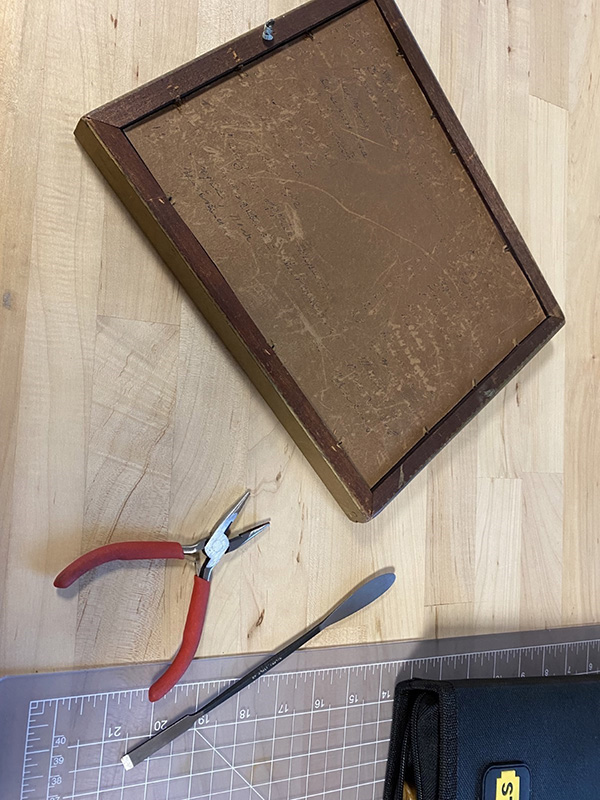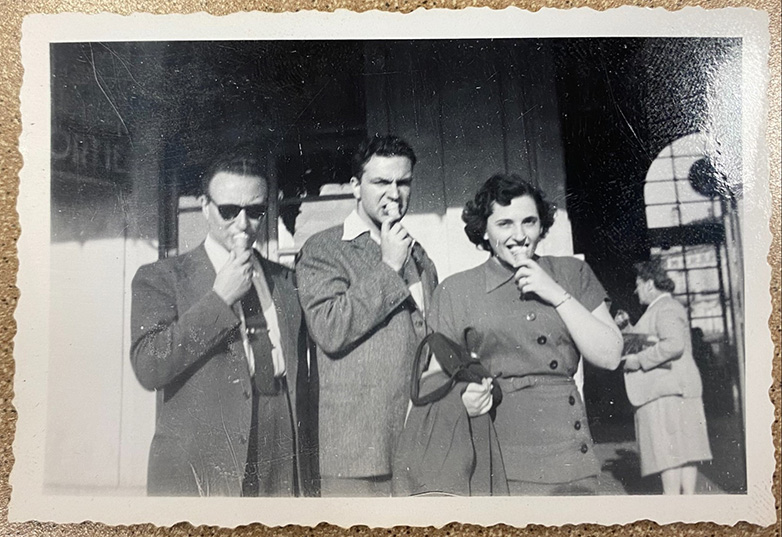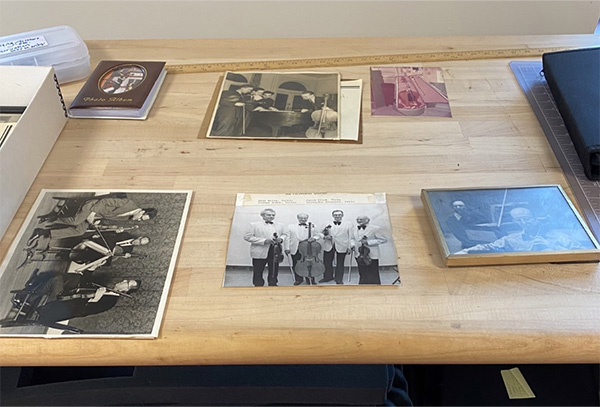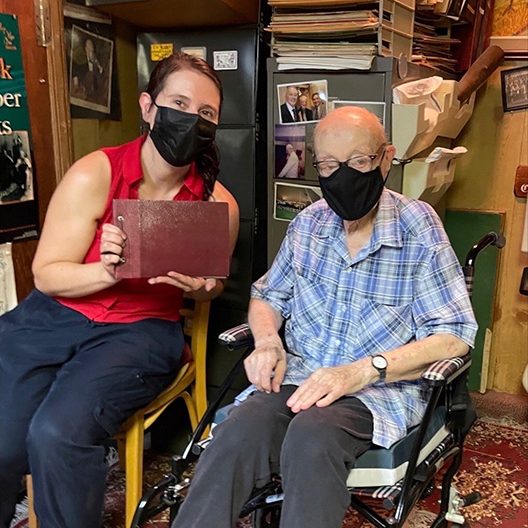By Pamela Padilla
Wondering what an archivist does? In this post, Pamela Padilla, the library’s Shirley Klein Rare Book and Manuscripts Graduate Fellow, provides a sneak peek of her work processing the Alexander Kouguell Papers. Kouguell, a world-class cellist, taught at Queens College for over 68 years and sadly passed away on October 2, 2022. He donated his papers to the Queens College Library just a couple of months ago, in August 2022.
Most librarians will agree that archival science is an important branch of library work, but despite the deference there is often the question of what exactly an archivist does. There are many aspects to an archivists’ profession such as reference work, collections care, and management of new/existing material, but today I will be focusing on processing—an invaluable part of collections care.

This was the case with the Alexander Kouguell collection, which required extensive processing. Not every collection has these processing demands, but the Alexander Kouguell Collection is diverse not only in its content but its mediums. Music manuscripts required rehousing, documents required de-framing, and photographs required sleeving. Several scrapbooks had to be vacuumed to mitigate any risk of mold, and their contents were well worth saving.

Dr. Kouguell’s career as a professor at Queens College began in the 1940’s and lasted over 60 years, with an additional 10 as an adjunct lecturer. His collection offers its viewer a snapshot of his life, from his honeymoon photos to his participation in Queens Colleges faculty orchestra throughout his tenure, but his extensive career as a cellist also offers a cultural snapshot of NYC throughout half a century. The preservation of his life and history serve as a reminder of the impact that can be made by a singular person.
It’s usually the case that people unfamiliar with the profession may ask “Why rehouse anything? Aren’t the folders/envelopes/plastic slips that these materials come in enough?” and our answer to that is that they usually aren’t. Photographic negatives, photographs themselves, or oversized papers aren’t typically argued against when discussing rehousing, but even paper requires special care. Paper isn’t what it used to be and hasn’t been since the mid 19th century—its lower quality leads to an inevitable yellowing and breakdown due to acid hydrolysis, or the breaking down of the cellulose that keeps the paper together. This process threatens paper and its contents.


The processing of collection often begins before the first object is rehoused. That is, it begins with the acquisition. An archivist ensures that their institution has an appropriate level of copyright and intellectual control through of a deed of gift. By ensuring the proper acquisition of a collection from a donor through a mutually agreed upon deed of gift (assuming the donor is one outside of the institution), an archivist has begun the processing of this collection.

The processing of an archival collection takes time, patience, and (surprisingly enough) a bit of elbow grease. It’s how we rehouse our materials to maximize their longevity and how institutions ensure they have the intellectual control needed to make collections accessible.
Pamela Padilla is a second-year candidate in the Dual Degree program in Library Science and History (MLS/MA), pursuing a Certificate in Archives and Preservation of Cultural Materials. Padilla is one of three graduate students participating in the Archives Fellowship Program at Queens College Library over the 2022-2023 academic year. Fellows carry out real-world projects in Special Collections and Archives, receiving stipends, mentorship, and professional development opportunities.
